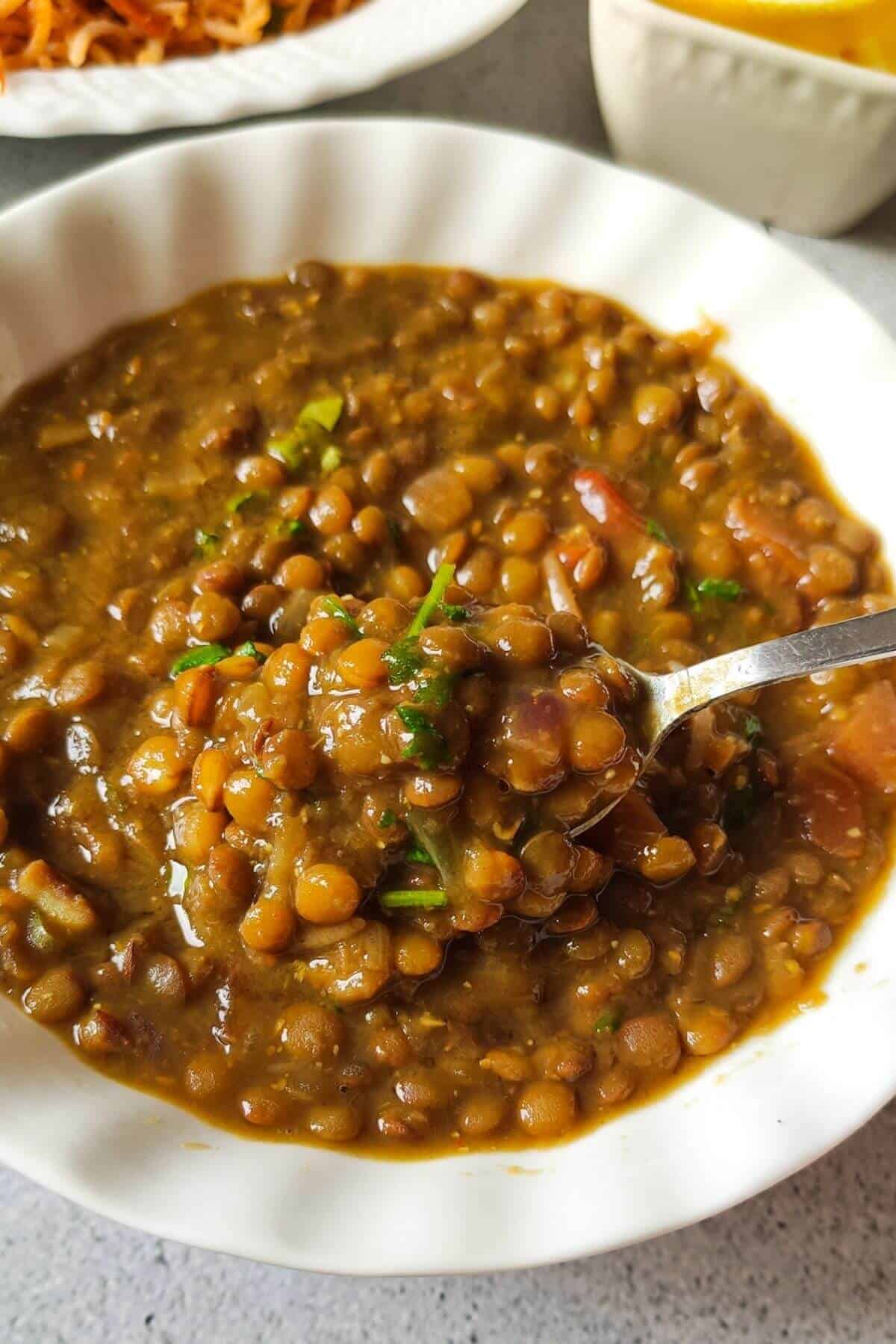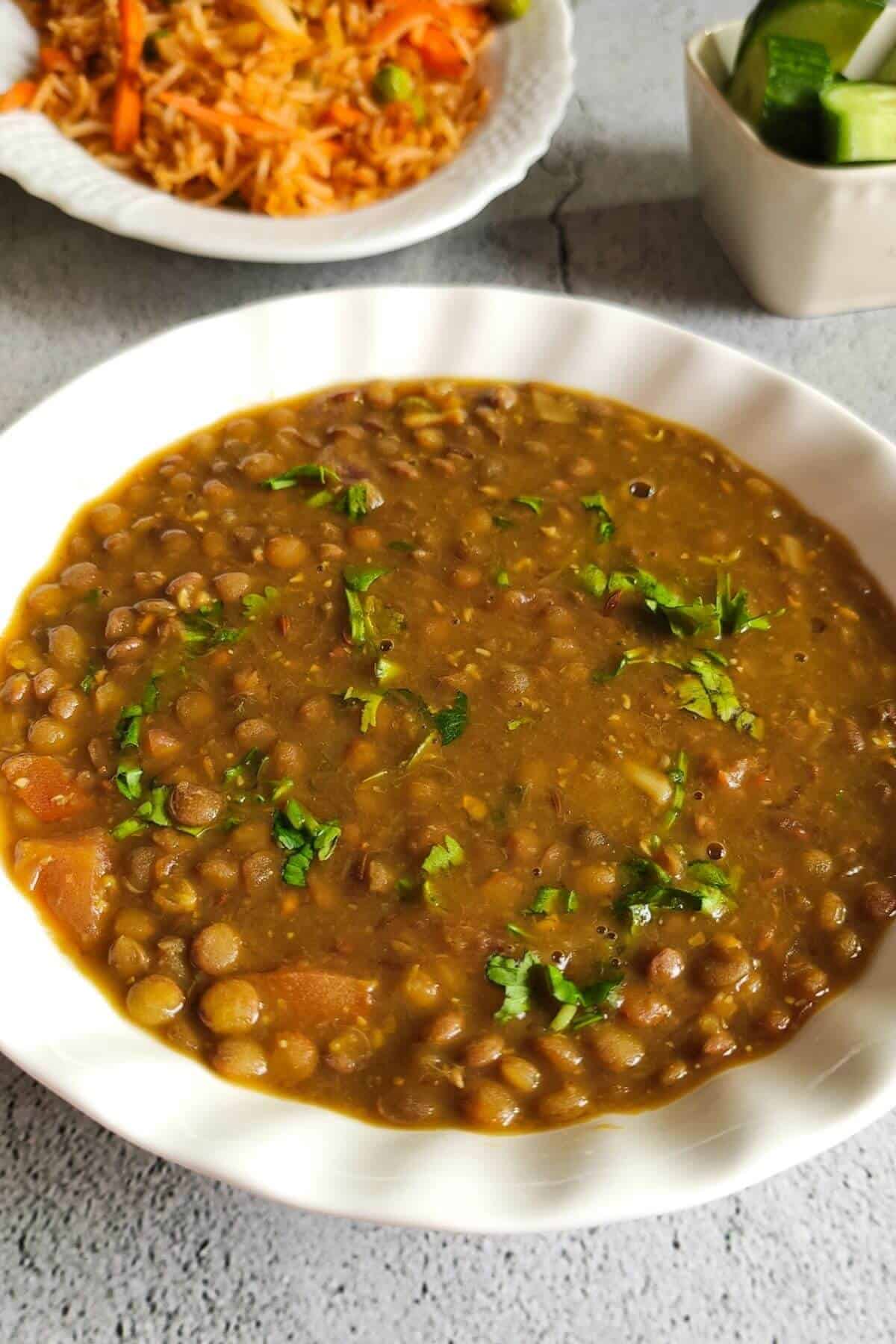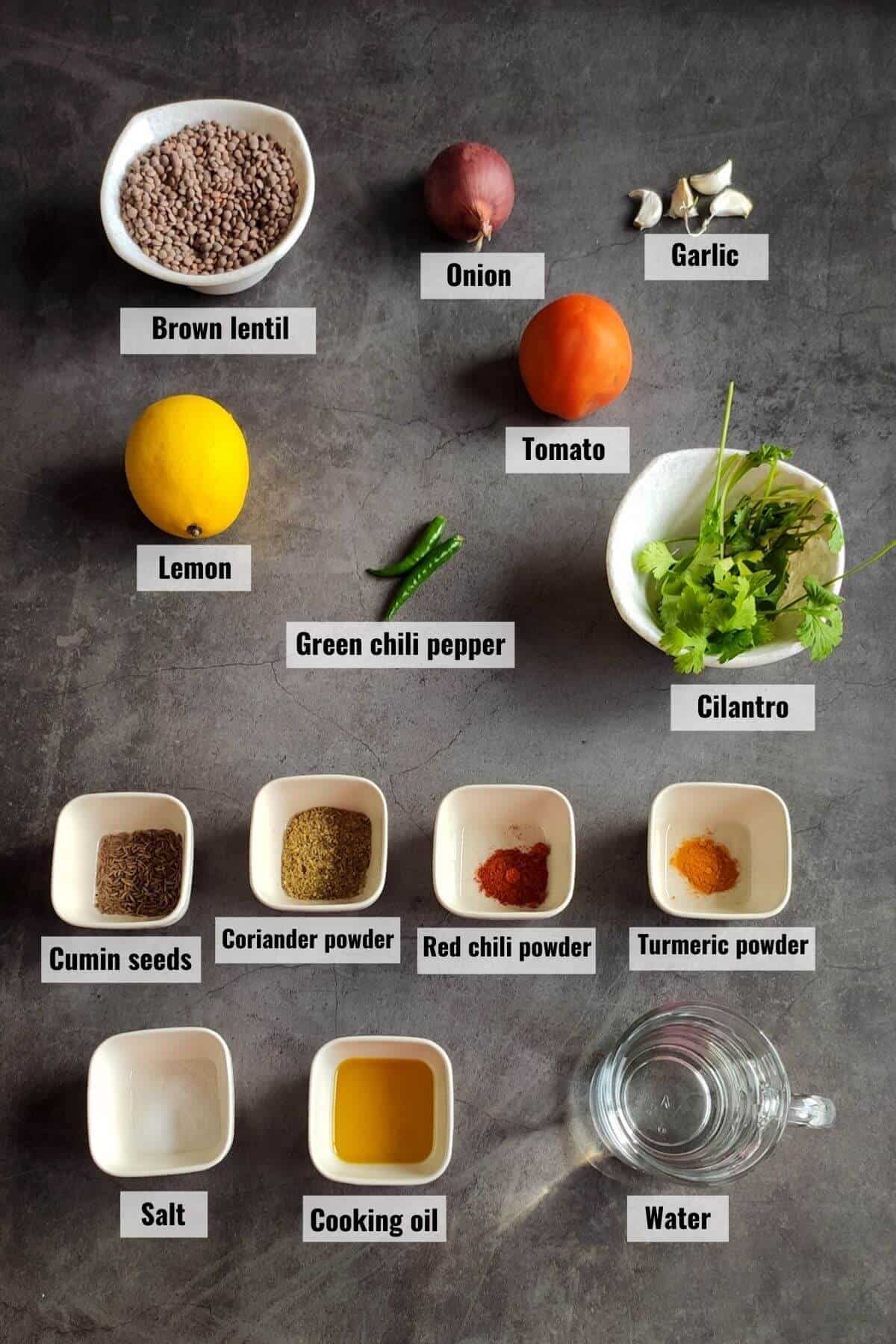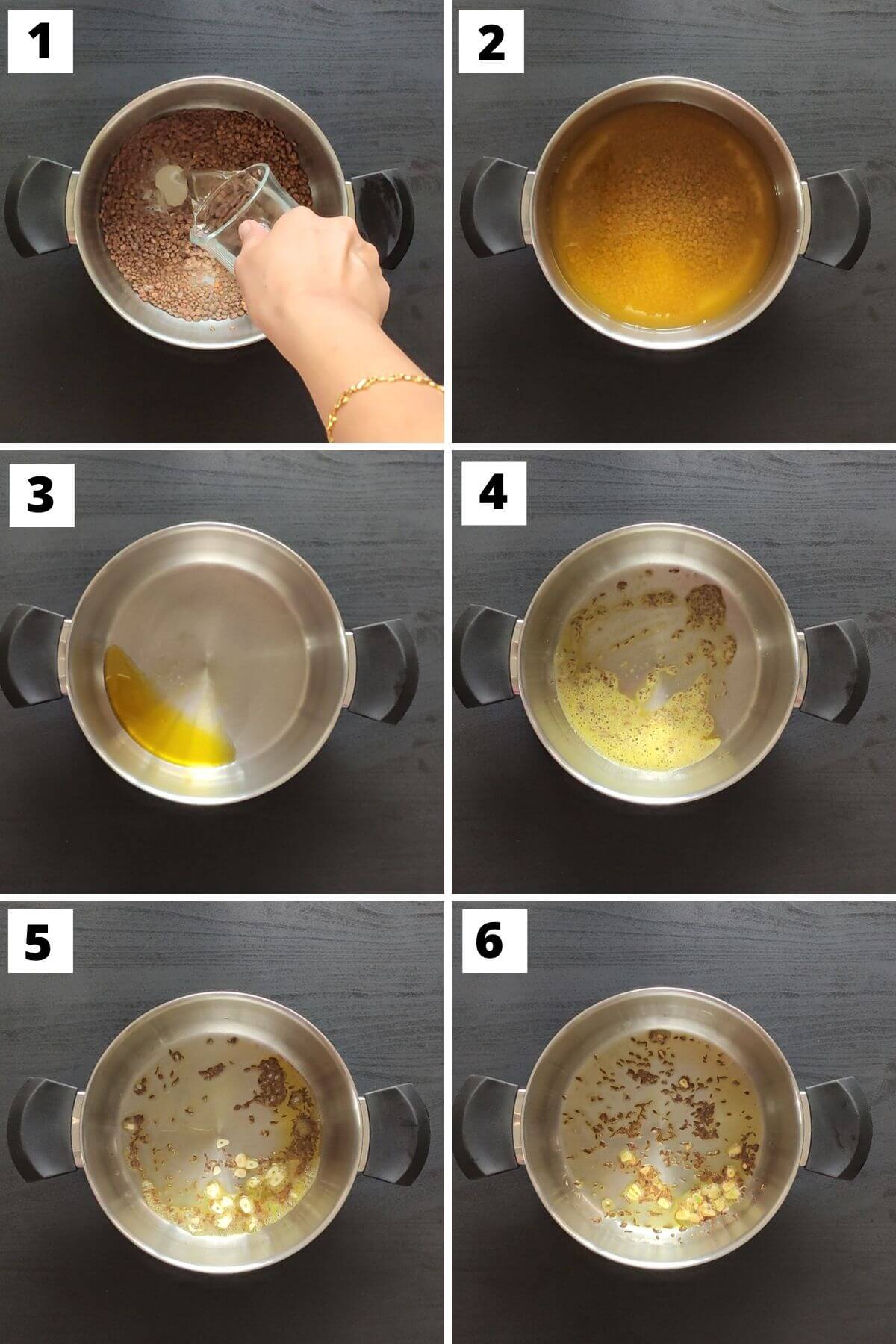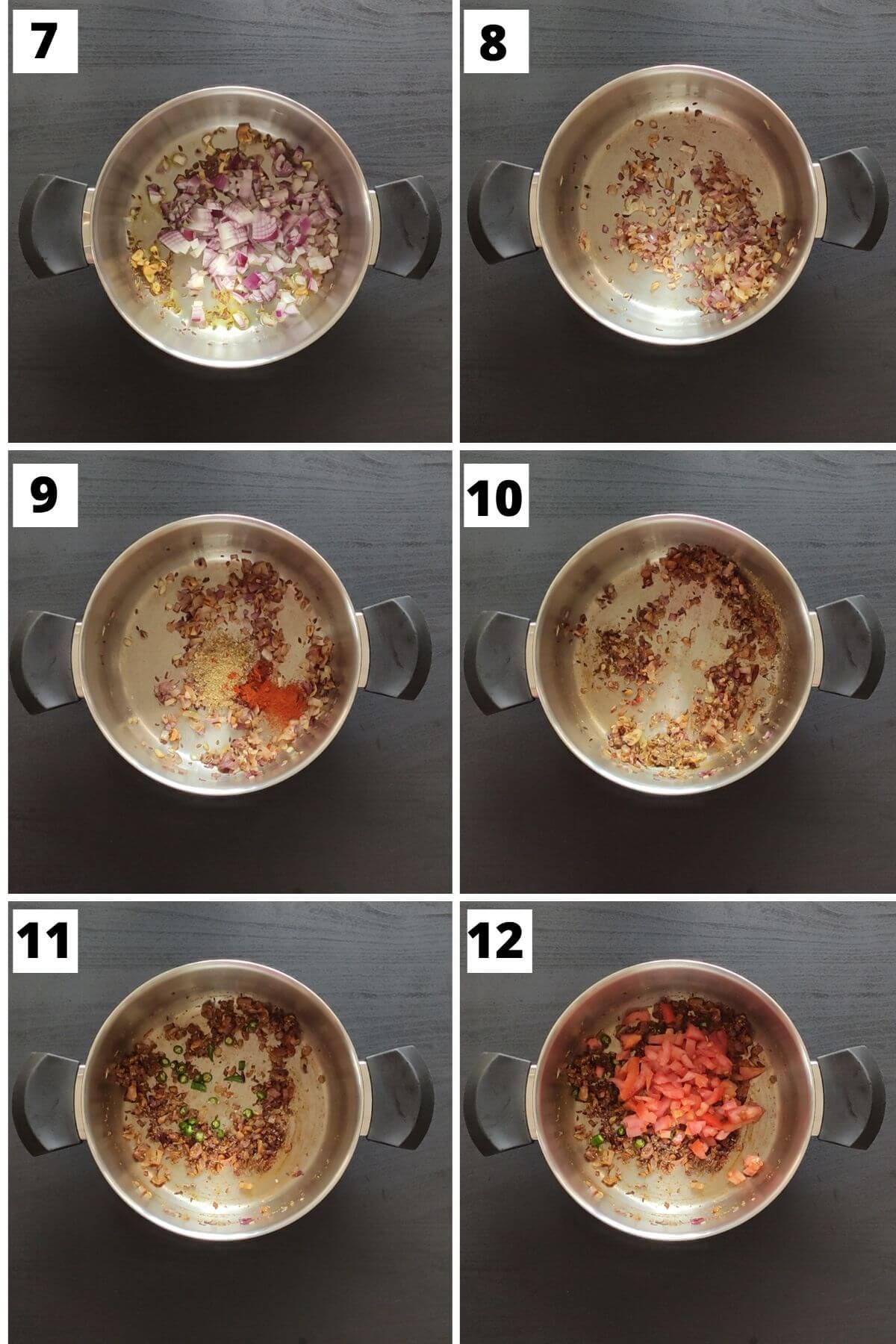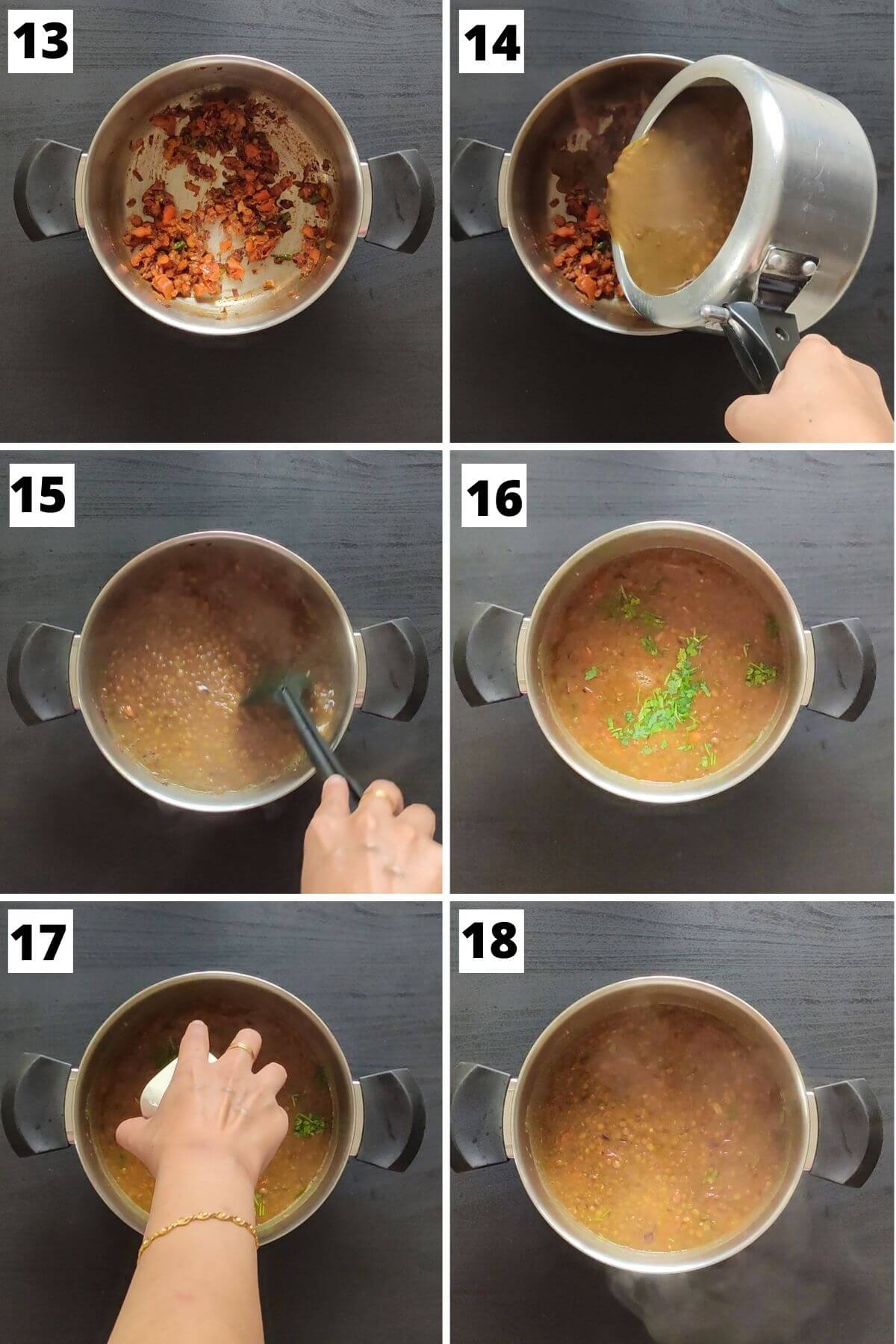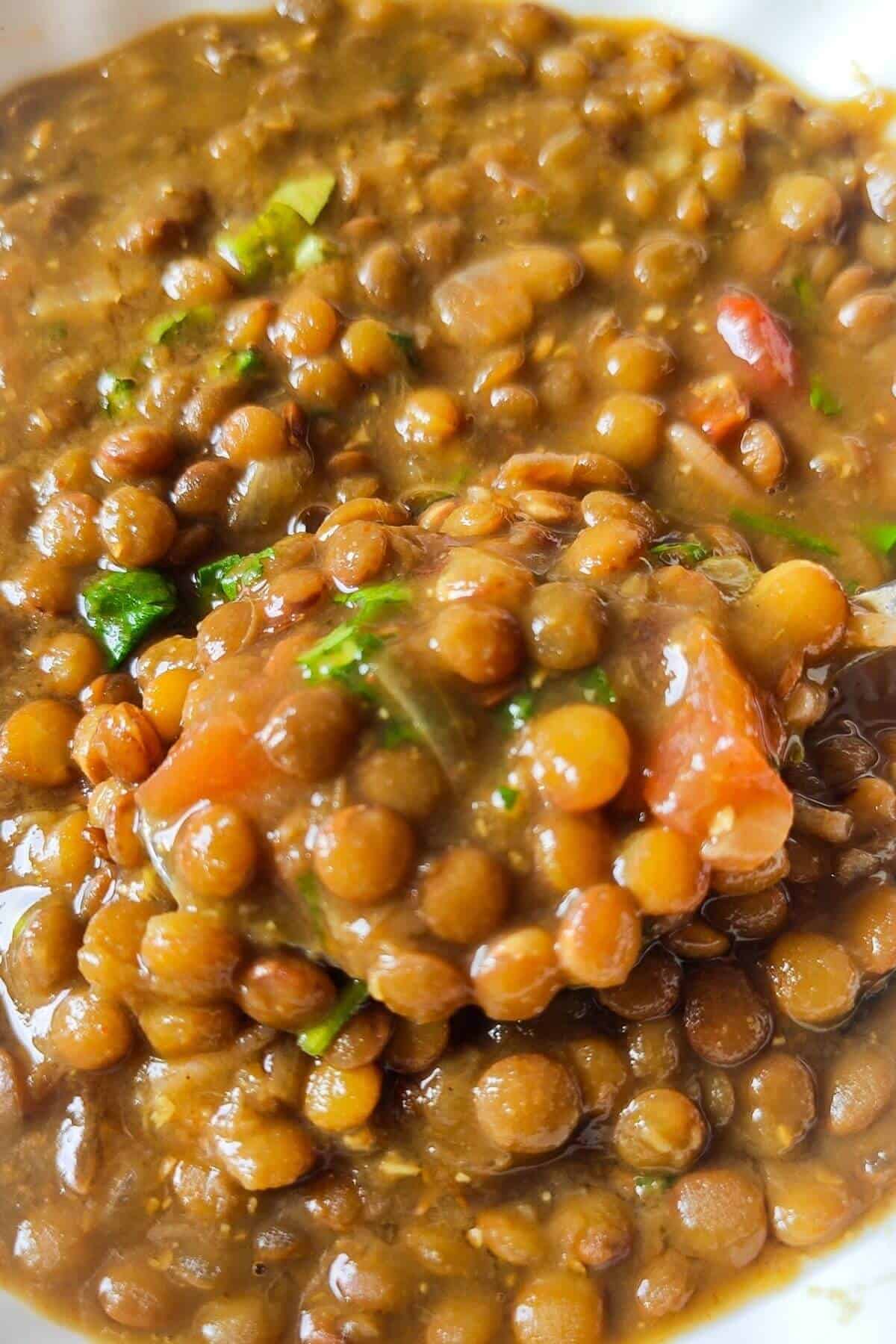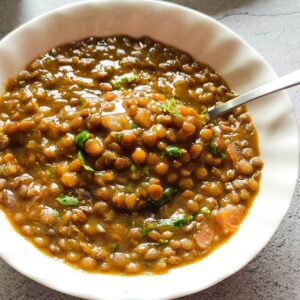Before sharing today’s recipe- brown lentil curry which is known as Sabut Masoor ki dal in India, I will share a story that my mother shared with me when I was a kid. This story is one of the reasons why I love brown lentil curry.
The story
I come from a beautiful Himalayan state of India-Uttarakhand. In Uttarakhand, there was a community of female monks called Mai (Mai means mother in Hindi). I used ‘was’ in my last sentence as I am not sure if that community still exists. I could not visit my hometown for the last 14 years and even in my childhood days, I never saw any young Mai. Most of the Mais were of my grandmother’s age or even older. This means that the practice of becoming a Mai had started shrinking long back which is a good thing considering that most of the Mais were widows from poor families or women with a tragic past and no other place to go. Now women are independent and educated so they are in a better position to start fresh even after falling in life. However, the women were more vulnerable in the older years. So many years back (I am not sure when but maybe 6-7 generations back) such abandoned, lonely women formed a group and started living together in different Ashrams which they formed near the Shivalayas(temples of Lord Shiva). Living with other women who were either rejected by the society or those who rejected the society, soothed the pain of their struggles to a certain extent. My mother tells us that when she was a kid there were many young Mais. She specifically remembers one Mai who was very pretty and even as a child my mother used to feel awful seeing that beautiful young lady living a sad and lonely life. On becoming a Mai these women were given a new name mostly of holy places or Hindu Goddesses. They used to shave their heads and wore only plain peach-colored sarees without any makeup and accessories. They had the routine of traveling (mostly walking) to different villages where the villagers used to give them some uncooked rice and lentils. My mother remembers that while giving lentils to Mais, people used to add small packets of basic spices and salt required to temper that lentil and sometimes some money too. It was not considered as begging but more as a bhiksha (some token given out of respect or care) and these Mais survived on those basic tokens from villagers. The good thing is that in Uttarakhand, people respected these women and no one ever exploited them. Many times while traveling from one village to another, they used to halt at different villages during the night and they were always welcomed by villagers inside their homes. They were clean, hygienic, and peaceful women who used to cook their own food outside the house by burning wood pieces and always used their own utensils for cooking. They also preferred sleeping on the floor and using their own sheets. During such night halts they sometimes used to share their sad and even harrowing past lives with the hosts. Why I shared this long story of Mai is because today’s recipe – Sabut Masoor ki dal became one of my favorite dals when my mother shared a story of two Mais with me when I was a kid. Once during the initial months of getting married to my father, my mother and one of my aunts were alone at home when two Mais came to their house. So my mother and aunt gave them some uncooked rice, brown lentils, and a few basic ingredients like salt, turmeric, mustard oil, lemon, green chilies, garlic, etc. The Mais quickly collected some wood pieces, lit a fire outside the house, and cooked rice and brown lentil curry on it. After eating the food with great satisfaction they laid down on the floor and slept for a few hours before leaving. My mother told us that the aroma of their simple food was so good that after they left, my mother and aunt cooked the same simple food for dinner and relished it with the whole family. Since the day I heard this story, I love Sabut masoor ki dal, and whenever I make it I remember this little story.
What goes in brown lentil curry?
To make this simple lentil recipe, you will need the ingredients shown below:
Ingredient notes and substitute suggestions
Other ingredient details and nutritional information are shared in the recipe card.
How to make?
This dal recipe is very simple, just follow the steps below:
Cook the lentils: Rinse brown lentils and put them in a pressure cooker with around 3.5 cups of water. Add a dash of salt and turmeric powder. The remaining half of the salt will be used later while tempering the dal. Put on the lid of the pressure cooker and cook dal till 3 whistles on medium heat. You can also cook it in a regular pot but then it will take more time i.e. around 1 hour to cook the lentils. If using a regular pot soak the lentils in water for at least an hour and add more water around 6-7 cups (preferably hot water) to cook.
Prepare tadka (temper): While the dal is getting cooked, prepare tadka. For that, heat oil in a pan. Add cumin seeds and when they start spluttering add chopped garlic. Saute until it starts turning brown. We don’t want raw or less cooked garlic in our tadka. Next, add onion and cook until the onion also starts turning brown. Add powdered spices and saute for around 30 seconds on medium heat. Spices get burned very quickly so don’t leave them unattended. Add chopped tomatoes, green chilies, and the remaining salt. Salt helps in the faster cooking of tomatoes. Cook until the tomatoes turn soft and mushy.
Mixing everything: Finally, add cooked dal to the pan, mix, and let it simmer for a few minutes. If the dal is too thick add some hot water to adjust the consistency. If the dal is too runny simmer uncovered on high heat until you get the desired consistency. Turn off the heat. Add lemon juice and roughly chopped cilantro. Mix everything and enjoy!
Step-by-step photo instructions
Brown lentil vs. red lentil
If you have just started using lentils in your kitchen, you might get confused by the huge variety. And, if you are following an Indian lentil recipe-masoor dal, you might get confused even more because both red lentils and brown lentils are called masoor dal in Hindi. The difference is that red lentil is called lal masoor (red masoor) or dhooli masoor (skinned masoor) and brown lentil is called kale masoor (black masoor) or sabut masoor (whole masoor). The reason is that they are the same lentils but in different forms. Brown is in the whole form with skin, red is split and skinned.
Serving brown lentil curry
Masoor dal is eaten with rice as well as roti or any other Indian bread. You can serve a vegetable dish like aloo matar, aloo matar gajar, bhindi masala, or a simple kachumber salad on the side. You can also enjoy a bowl of dal as a protein-rich soup. If you wish, you can also blend it to serve as soup.
Storing, freezing, and reheating tips
Freezing cooked food is generally not practiced in Indian homes. Most Indians frown on the idea of eating frozen food as most of us grew up eating freshly cooked food and are always encouraged to do that. However, I keep on receiving queries about freezing dishes from my readers from other countries so I always try to include them in my posts. This brown lentil curry freezes well. To freeze, first allow the dal to reach room temperature. Then, transfer it to batch-size freezer-safe containers or zip-lock bags and freeze. It will be fine for up to 3 months. To reheat, if the dal is frozen thaw it first. Then, reheat covered in a pan on the stovetop until heated well. Add some warm water while reheating if the curry has thickened. Otherwise, transfer to a microwave-safe container. Add some warm liquid, if required, to adjust the consistency. Microwave for a minute, stir, and microwave again until evenly heated. For a fresher taste, temper the dal again by sauteeing some cumin seeds and garlic in around a teaspoon of oil and then pouring it over the dal.
Recipe tips, tricks, and variation suggestions
To fasten the cooking process of lentils, soak them in water preferably hot water for at least an hour. For a more flavorful dal, use vegetable stock to cook it. Dal tastes a lot better with some ghee. If you are not a vegan, add a dollop of ghee on top of the cooked lentils. You can also use ghee as a cooking medium. If using mustard oil, first heat it to the smoking point and then allow it to get slightly colder before adding cumin seeds. You can also skip onion and tomato in the recipe and temper the dal with just some cumin seeds, garlic, and green chilies. It tastes amazing that way too. The number of whistles required to cook lentils may vary depending upon a lot of factors like the quality of lentils, the capacity of the pressure cooker, and even the altitude of the place where you are cooking it. With practice, you will get an idea of the exact number of whistles required to cook lentils. It’s better to start cooking masoor dal with three whistles on medium heat, if it’s not cooked properly increase the number of whistles. You can also add chopped spinach or fenugreek leaves to masoor dal to make it even tastier and healthier.
Frequently asked questions
More easy lentil recipes
If you are looking for vegan protein sources then do include lentils in your daily diet. And, if lentils are new to you, start with the following very easy but tasty lentil recipes:
More brown lentil recipes
Don’t miss to check out more brown lentil recipes from around the world: If you liked this recipe, please leave a star rating ⭐⭐⭐⭐⭐ in the recipe card below. You can also follow me on Instagram, Youtube, and Pinterest.
Recipe
